After our morning and early afternoon visit to Bunratty Folk Park and Bunratty Castle in Ireland, we headed into the Burren National Park, which is an area quite like no other with unique limestone-ridged hills and valleys. As you may have read in one of my previous entries, we arrived in the Burren the day before and took a drive around and went to some caves, abbey ruins, and sea cliffs. You can read more about that in my posts Visiting the Burren in Ireland and a Visit to the Cliffs of Moher. Each afternoon, visitors can join local guide Tony Kirby from Heart of Burren Walks for a walk around an area of the Burren.
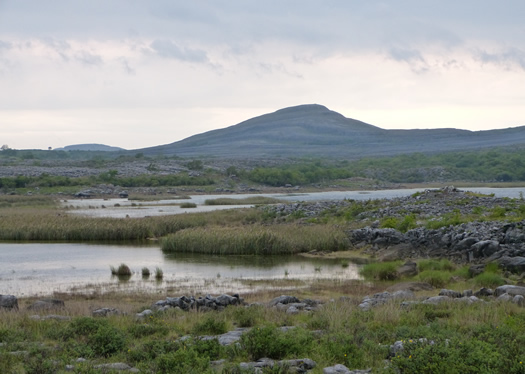
We arrived in the town of Kilfenora, located in the middle of the Burren. We went to the Burren Centre and had lunch before meeting the guide outside the centre in the afternoon. Unfortunately, the weather was not looking so great and we had some rain, but it was not heavy. Before our walk, I went to the ruins of the monestary in Kilfenora in order to see the selection of high Ireland crosses here. The ruins are located near the centre, so we did not have far to walk.
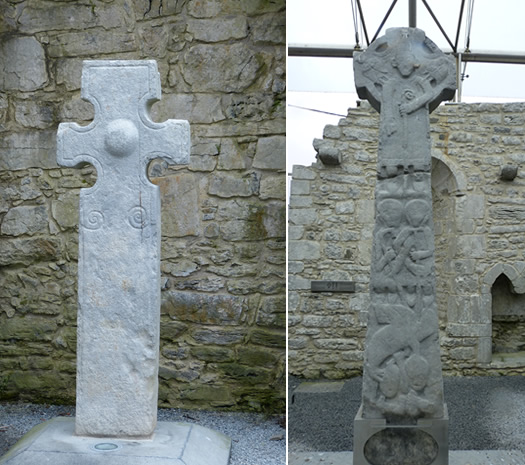
Kilfenora was the site of a monestary recognised in the 1150s but founded 500 years earlier. The site has seven 12th century Irish High Crosses. It's best known for the Doorty Cross, located on the right in the above photograph. There are more High Crosses on this site than any other in Ireland, so it is worth a visit.
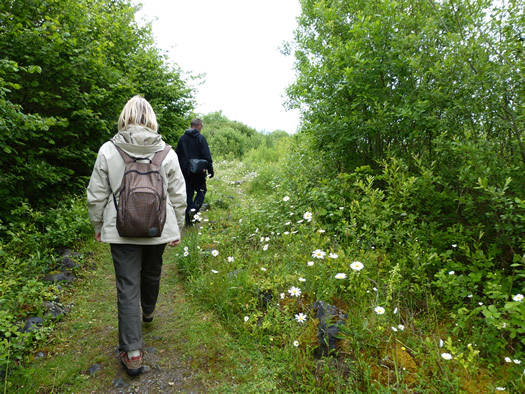
A nice Italian couple were also on the tour with us, and they were writing an article for a travel magazine, focusing on the nature of the Burren. The walk was focused on plant life as well as a little history into what caused the geography of the area and its strange rock patterns. Both of our sets of cars followed Tony a few miles out of the town to the footpath. Tony had heard from another guide about a rare orchid, so we went to take a look.
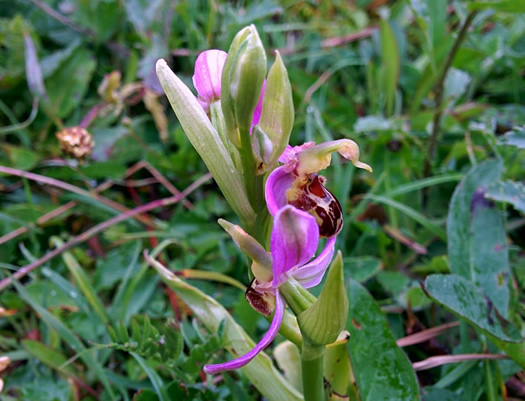
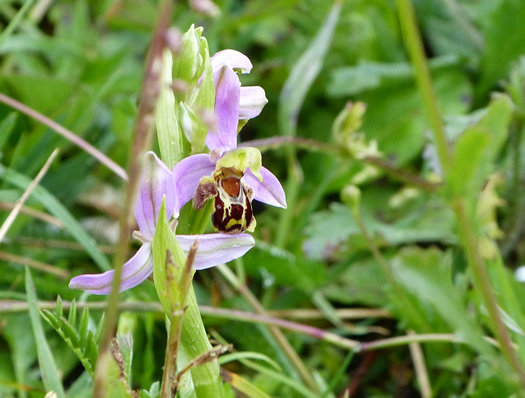
The orchid is known as "bee orchid" or Ophrys apifera. It gets its name because it looks a little like a bee. Bees are attracted to it and then pollinate it. It is not common in Ireland, and we were told that the area of the Burren harbours plantlife that is uncommon for Ireland as the area is mild in temperature all year. The bee orchid that we saw is located on a site that was developed on. Apparently, the area was going to be built upon, despite being a national park. This eventually was abandoned because people were unhappy with the decision, so the area reverted back to nature.
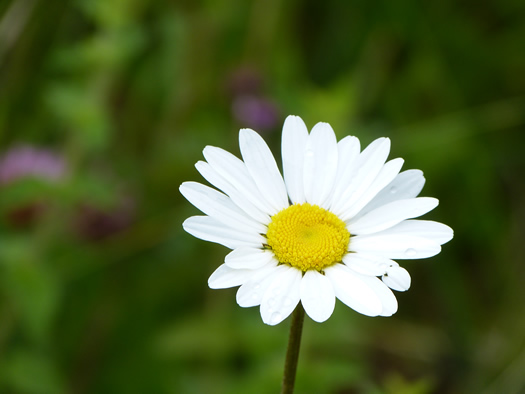
There are many different types of orchids in the Burren. Below is a Fly Orchid.
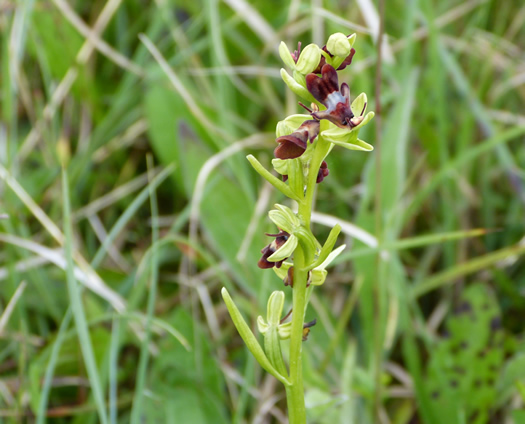
The wildflower roses (pictured below) are quite common and like to grow out of the limestone.
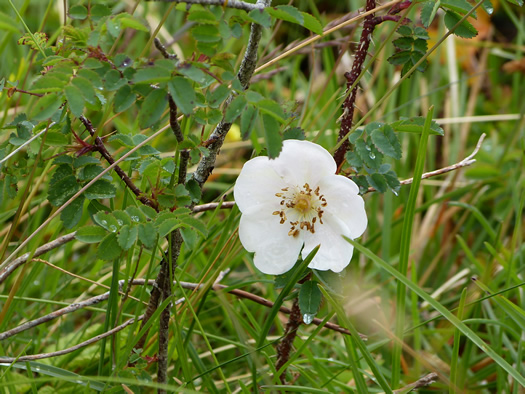
We continued our walk, over some of the limestone pathways to see some good views. Luckily, the worst of the rain went away, but we each had an umbrella in order to keep dry as the rain did keep coming.
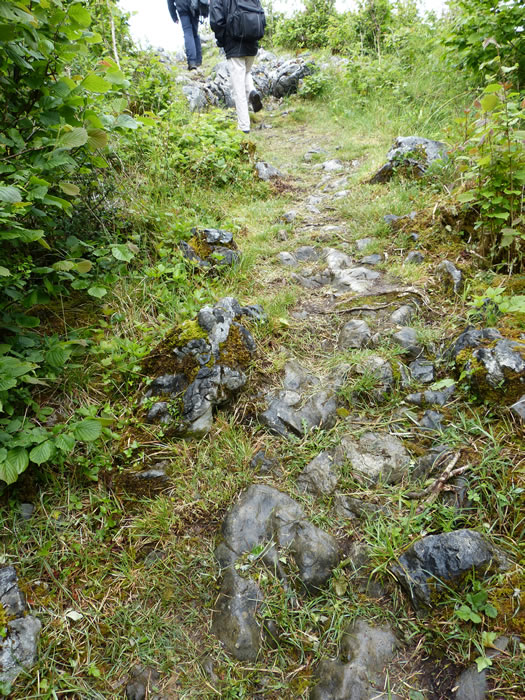
The rocks form unusual patterns. These were located at the bottom of a sea 350 million years ago.
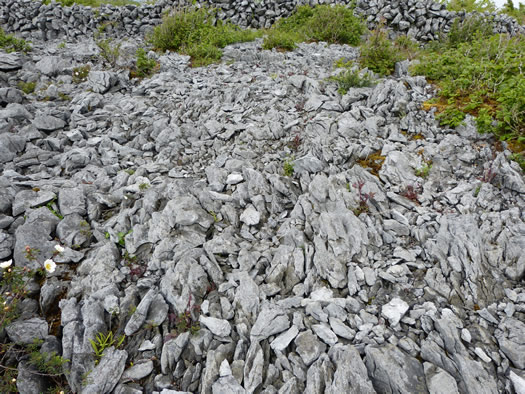
They contain fossils. I loved looking for fossils when I was younger, so these were fascinating.
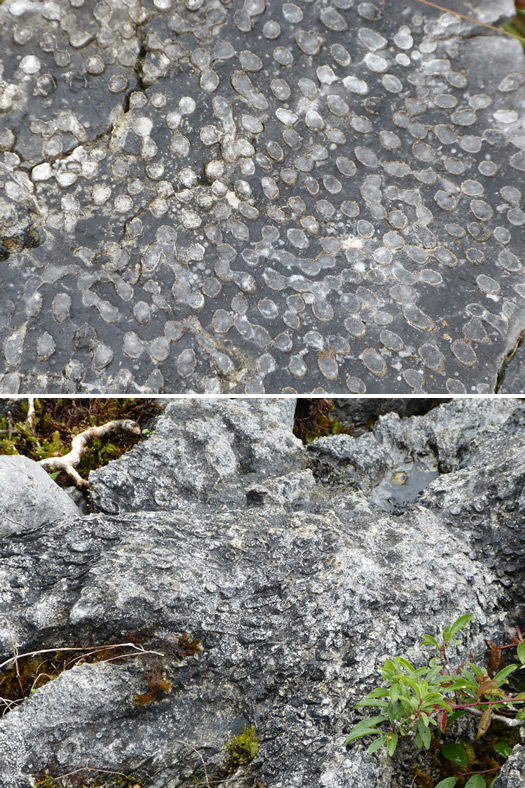
Plants grew out of the rocks and around them.
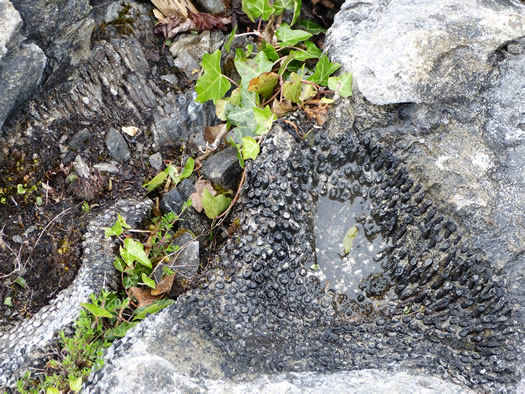
Bordering the rocky areas, the trail winded around mossy forest area.
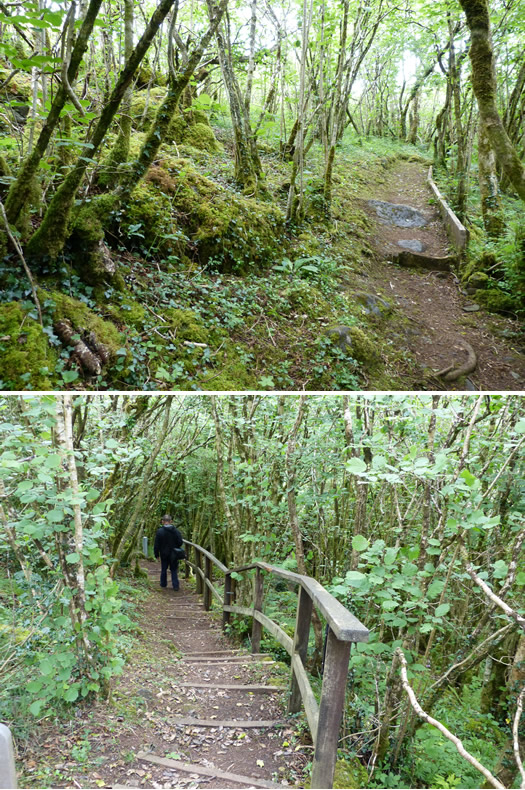
We saw more plant life, which is alpine, and unique.
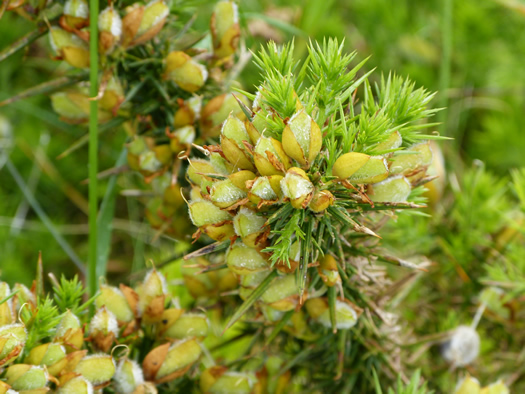
The moss-covered rocks and trees were pretty. We continued around the trail and came to a stop where we were told about the Irish cottages that were built here. The cottages are simply piles of stones now, reclaimed by nature.
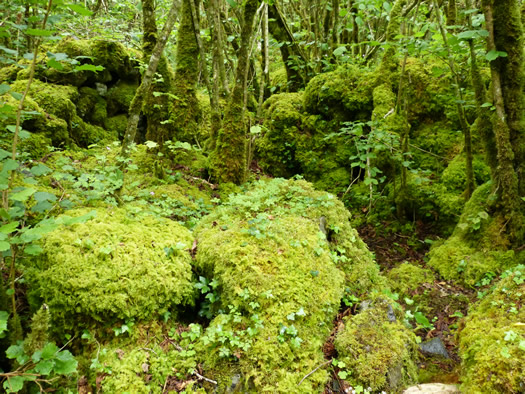
The trail winded around to area with large limestone rocks and beautiful views, which we admired.
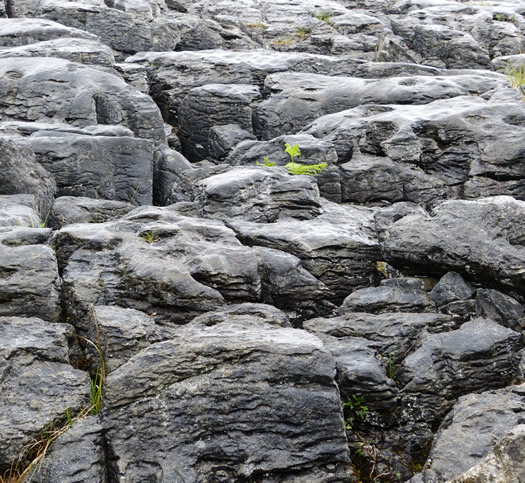
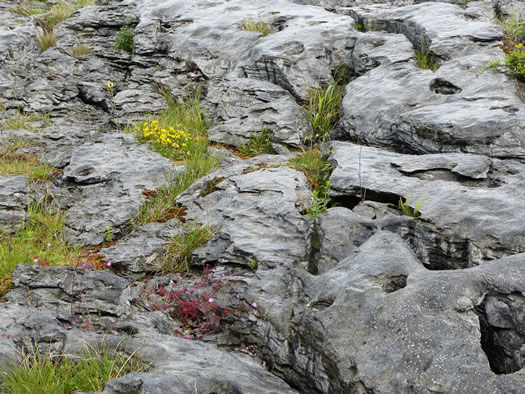
The hills are made of the rock and form unusual patterns. Lakes are formed below the hills, and I imagine that some of these lakes could be deep.
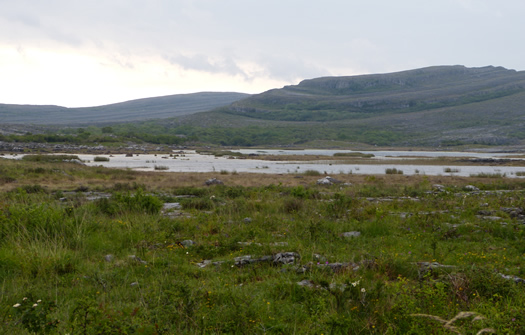
The last part of the trail led through a meadow. To stop nature reclaiming too much of the unusual landscape, cattle are brought in during winter months in order to eat the grass. The cattle used are the "Oreo cows", as I like to call them; the professional name for them is "Belted Galway". They are kinder to the climate and the meadows. This type of farming is traditional and historical for the Burren's heritage.

Of course, the common clover, orchids and other wildflowers can be seen here. We also saw a toad hopping around the grass.
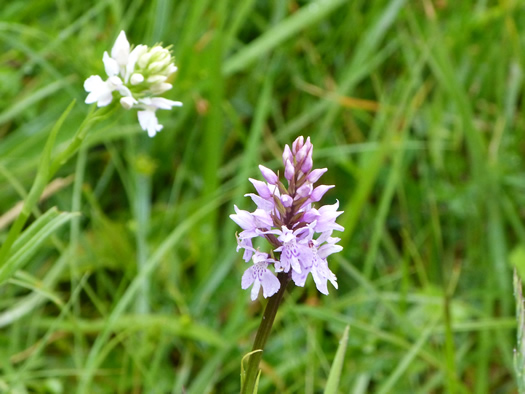
The views were amazing, and we really learned a lot of interesting bits of information about the area of the Burren and the wildlife during our guided walk with Tony. I love the patterns of limestone of the hills, which looks like someone has moulded them out of wet clay. I have never seen a place like this.
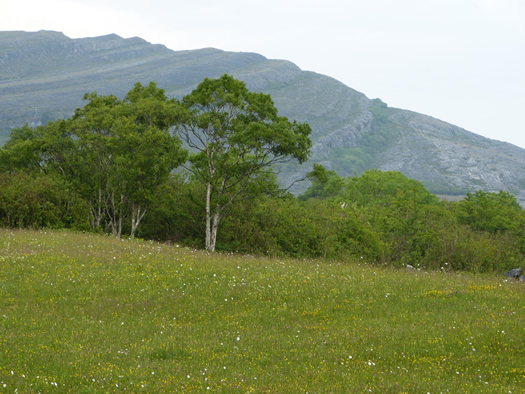
The Burren has a lot to offer, and I could have spent another couple of days here in order to do some longer walks. I would love to visit the Burren again and take a look at some of the ancient sites. There are many stone circles and tombs in the Burren, and I'd love to pay these a visit. Our Ireland road trip tour, which took place from the end of May until the middle of June last year, was just a whirlwind tour around Ireland to see some of the highlights.
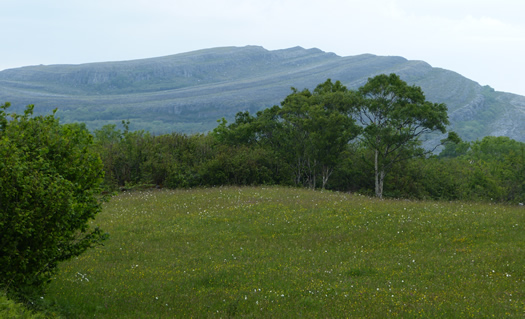
I recommend the Heart of Burren Walks. Tours with Tony last approximately two hours and meet outside the Burren Centre in Kilfenora every day. Tours can also be arranged outside of these times, and they can be personalised based on interest. For more information, visit http://heartofburrenwalks.com. Tony also has a book out about the Burren, which can also be purchased on tour or in bookshops around the area, and he's an advocate of the nature and environmental issues in the area and generally a wealth of knowledge of the area.
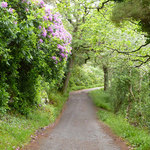

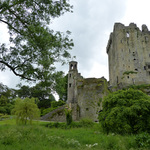
Leave a comment